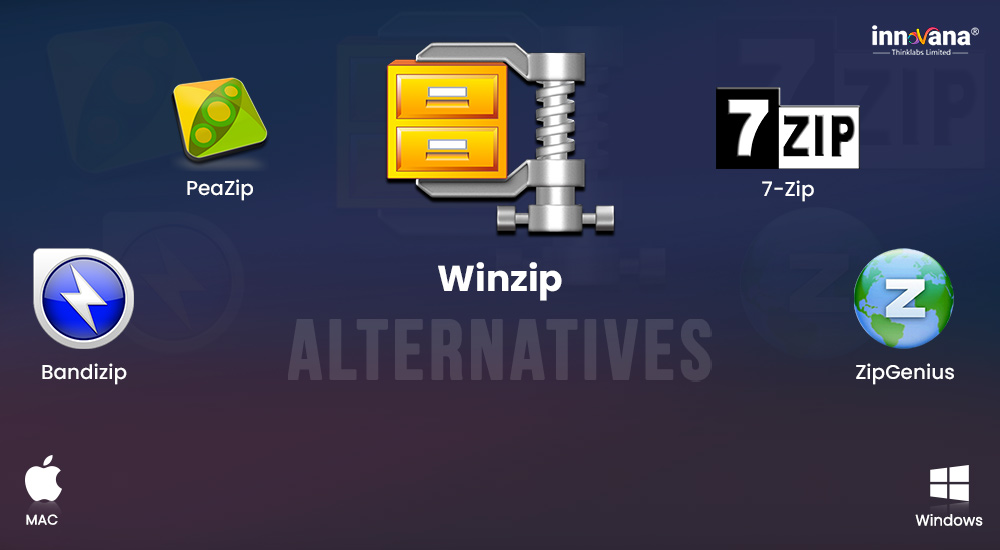
- #Best 7zip for mac how to
- #Best 7zip for mac mac os
- #Best 7zip for mac install
- #Best 7zip for mac zip file
- #Best 7zip for mac archive
#Best 7zip for mac mac os
In fact, you can easily do this using multiple methods, some of which are built directly into Mac OS via the command line.
#Best 7zip for mac archive
The syntax is simple, just point the command at a zip archive to extract it to the present working directory.
#Best 7zip for mac zip file
Whether you use the default Archive Utility tool that comes with Mac OS to open zip files or go for the third party solution like The Unarchiver is entirely up to you, both will open a zip file with a simple double-click option. That vast support for extracting a wide variety of file types is one of the many reasons why The Unarchiver is a great third party app to add to a Mac. This enables the third party tool to open zip archives and other items in Mac OS that the default Archive Utility may not support, which is another benefit. Once The Unarchiver is installed and launched, it will want to associate with all known archive types on the Mac.
#Best 7zip for mac install
To do this, you will need to download and install The Unarchiver first. The Mac also includes an ultra simple ability to make a zip file or even to make a password protected zip file.Īnother option is to use the popular third party archive extraction tool called The Unarchiver to open. The built in Archive Utility tool in Mac OS will open the zip archive and extract the file stypically they are placed within a folder of the same name of the zip archive, minus the. The zip file is simply the compressed data presented as a single archive. For example, a single zip file may contain a handful of documents of various file types, or an entire folder of JPG files, or an application, or any such similar data. Wonder no more, it turns out that opening and unzipping files on a Mac is very easy thanks to the built-in Archive Utility tool. If you get a zip file you may be wondering how you can open the archive to view what it is and extract the internal components of the zip archive. No 7-Zip for Mac, But Here are 5 7-Zip Alternative Mac Zip files are frequently encountered when downloading stuff from the web or elsewhere to a Mac, and while the Zip format used to be widely limited to the Windows world.

August 4, at pm.Zip files are archives that function as a single compressed package of a either multiple files, a folder, or a single item. Reproduction without explicit permission is prohibited. The Unarchiver can only access macOS Name required. UnArchiver will not let me select z7 in the archive formats. You can think of it like a swiss army knife for archives.Įnjoy this tip? Subscribe to the OSXDaily newsletter to get more of our great Apple tips, tricks, and important news delivered to your inbox! Enter your email address below. This is normal, just make sure you have sufficient disk space to accommodate the uncompressed data. You can also open The Unarchiver directly, and then open the file through Unarchiver directly, where it will extract as well. Now that The UnArchiver has been installed and associated with. The only differences are in the names of the items that appear in the pop-up menu and the name of the zip file that is created.First off, a. The compressed version is in the same folder as the original file or on the desktop, if that's where the file or folder is locatedIt has the same name as the original file with a.Ĭompressing multiple files and folders works about the same as compressing a single item. The original file or folder is left intact. The Archive Utility zips the selected file. The name of the item you select appears after the word Compressso the actual menu item reads Compress. Open a Finder window and navigate to the file or folder you want to compress. Apple makes zipping and unzipping files and folders extremely easy by selecting them in the Finder and using the Archive Utility.Ĭompressing a file or folder in the Finder window is a simple process. The Archive Utility may be tucked away, but that doesn't mean you can't access its services.


However, if you have a large number of files to compress or uncompress, you can launch the utility and drag and drop files and folders on it. Usually, you use the Archive Utility without launching it. Try the utility as configured in its default state. Most users never need the modify the settings for the Archive Utility. Apple and app developers use core services to enhance an application's capabilities. Information in this article applies to Macs running macOS Catalina Apple hides the utility because it's a core service of the operating system. It's a basic tool, but it gets the job done.
#Best 7zip for mac how to
Before you download a third-party app, learn how to compress and decompress files and folders using the Archive Utility built into the Mac. A quick look at the Mac App Store reveals more than 50 apps for zipping and unzipping files. This integrated system is relatively basic, which is why many third-party apps are also available.


 0 kommentar(er)
0 kommentar(er)
